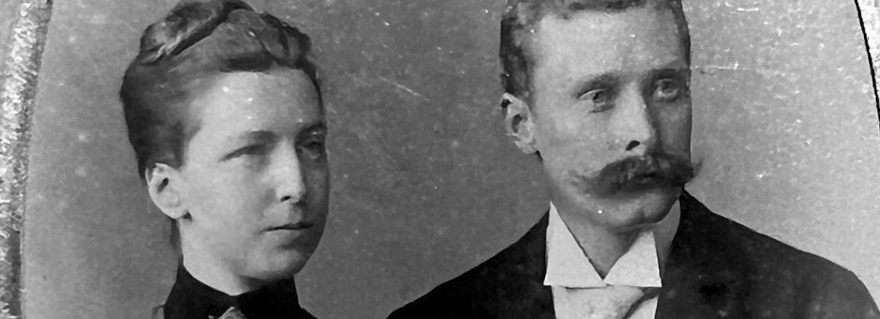
Jeanette Wagenaar writes about Louise Six: ‘I wanted to give a voice to women in history’
When Jeanette Wagenaar read Simone van der Vlugt's De amulet (The Amulet) at the age of eleven, she decided that she too wanted to write a historical novel one day. Thirty years later, Gooilust, about Louise Blaauw-Six, has now been published.
Wagenaar was so convinced of her dream to write a historical story that she chose her studies with that in mind. ‘I wanted to become proficient in historical research so that I could write about it,’ she says. After a year of teacher training in history in Utrecht, she opted for art history in Leiden.
'The history programme was mainly politically and economically oriented, but as early as secondary school I was already mainly interested in art. So switching to art history was an obvious choice,' she explains. 'At the time, Leiden was the only university where you could also choose Journalism and New Media, which allowed you to develop your writing skills. What's more, they offered a minor in Books, Bookshops and Publishing, and I really liked the atmosphere during the Open Days, so it made sense to come here.’
Louise Six
During her studies, she noticed how strongly the field of art history is dominated by men. ‘If you want to tell the complete historical story, women's voices need to be included. That's why I wanted to write about a woman.’
Three years after graduating, she enrolled at the Schrijversvakschool (School for Writers) with that intention, but for a long time Wagenaar was unsure exactly which woman she wanted to give a voice to. A customer at the bookshop in Hilversum where she was working at the time helped her on her way. 'She came in asking for the book Het Bos van Blaauw (The Forest of Blaauw). I was familiar with that area near Hilversum, but I didn't really know anything about it. Because the book was no longer available new, I went to the library.'
The wooded country estate Gooilust turned out to be named after the eccentric amateur biologist Frans Blaauw, married to Louise Six. ‘When I started reading the book, I discovered that Louise was the owner of the estate and things happened that I didn't quite understand,’ says Wagenaar. 'For example, she sold a pair of rare white-tailed gnu and had a partition built in the bed, without it being entirely clear why: after all, the book Het bos van Blaauw focused mainly on the life of Frans Blaauw. I then wrote a short ten-page story about Louise for the Writers' School.'
Difficult search
Those ten pages quickly turned into fifty, and it became clear to Wagenaar that Louise Six was the ideal subject for her graduation project. She delved into the archives and contacted the author of Het Bos van Blaauw. ‘He immediately offered me his archives, but unfortunately he passed away before our second appointment,’ she says. 'It was a great pity that I missed out on his knowledge.'
Access to the archive of Louise's art dealer family Six was also difficult. 'Another writer was working on the archive and after that it was to be digitised, so I had to take into account a waiting period of one to four years. Fortunately, in the meantime, I found a large number of letters between Louise and Pieter van Tienhoven, the director of Natuurmonumenten (Association for the Preservation of Nature Monuments in the Netherlands) at the time, in the Amsterdam City Archives. And I read a lot of literature about the period around 1900. That helped me construct part of the story.’
A woman’s voice
Given the lack of female voices in history, Wagenaar could easily have graduated with a thesis on another woman, but that was not an option for her. ‘Once I get my teeth into something, I just have to continue with that one subject,’ she says with a laugh. She decided to wait until she finally gained access to the Six archive and could record Louise's entire story. ‘I eventually dropped out of the Schrijversvakschool because the research period took too long. When the book was finished, I immediately decided to take the step towards publishing it. It feels good to have given a voice to a woman whose freedom of movement was very limited in her time.’
